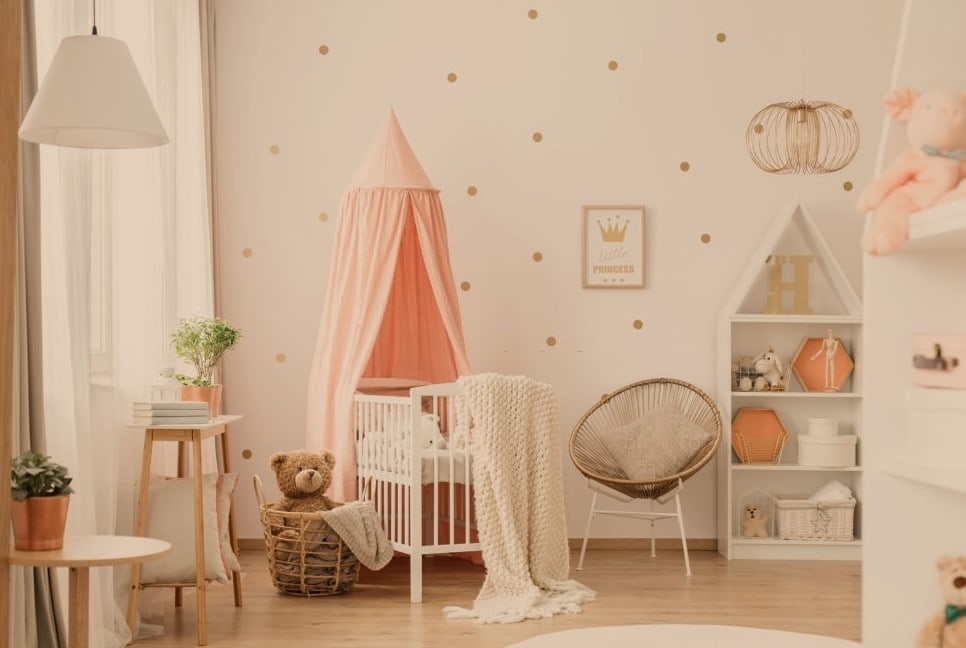
Baby’s First Bedroom
Designing a special room just for baby is super exciting, but if you aren’t sure where to start, it can feel a little overwhelming. There seems to be so much to consider, so many dos, don’t and everything in between, but with our design tips, it’s easy to create the perfect nursery for your bundle of joy.
Pick your color scheme
Traditionally people have always chosen blue for boys and pink for girls, but why stick to that when there are so many gorgeous colors to pick from? A gender-neutral scheme, even though most parents-to-be know whether they are expecting a boy or girl, is a more acceptable option.
A baby’s visual development, too, should be taken into account when choosing colors and patterns. Newborns can only see in black and white and until around three months vision is limited to detecting bright and dark tonal qualities. At three months old, red can be distinguished, as can the other primary shades, from then on, secondary, tertiary and everything in between start creeping in. Bright colors have more of an impact than paler, and this, coupled with gender stereotyping, is a good reason to avoid the traditional pastel blues and pinks.
Bold geometric shapes have been proven to stimulate tiny minds, with a three-month-old baby being able to recognize shapes and follow familiar patterns with their eyes. This goes against the traditional look for a nursery. But science suggests that if you want to give your baby a good start in life, bright colors and bold shapes are the way to go.
Once you’ve chosen your color scheme, take note of where your newborn will be placed in the room. He, or she, will be looking at the ceiling for much of the time, so make good use of color and shapes there, and if your little one has their cot near a wall, make that interesting too.
Consider picking eco-friendly paint, too. Not only helping the planet, they are also much better for your little one. Many paint products contain harsh chemicals known as Volatile Organic Compounds (VOCs), and these can be released into the atmosphere over time. The compromised air is taken in by everyone in that room, including your baby! Other products can harbor these nasty, harmful chemicals, also, so look for VOC-free mattresses, bedding, and even safe-to-chew toys.
 Keeping the nursery cool
Keeping the nursery cool
According to the American Academy of Pediatrics (AAP), the ideal temperature for your nursery is between 68 and 72 degrees Fahrenheit. Their research suggests that installing a ceiling fan can reduce the incidents of Sudden Infant Death Syndrome (SIDS) by up to 72%. Drapes, or blinds, that block UV rays and reflect heat are also great for keeping the room cool. The AAP warns against the use of crib bumpers, throw pillows, positioners, and other items that can cause overheating or suffocation.
Create a feeding area
Whether you breastfeed or use a bottle, you’ll want a cozy corner where you can relax and feed your little one. Design your feeding area with that in mind, picking, first, a comfy nursing chair. This should have padded arms, and be wide enough to feed baby in a position that’s comfortable for both of you. An end table, preferably with a drawer or two is a good idea and gives you somewhere to pop bottles, cloths, and other nursing essentials, including your favorite box of chocs! Don’t forget to keep some water to hand, especially if breastfeeding, as that can dehydrate you very quickly.
Think about how you light your feeding area. Too bright and baby (and you) might find it hard to settle at night, but too dim and you won’t see what you’re doing.
 Don’t forget the changing station
Don’t forget the changing station
As you’ll be spending many accumulative hours wiping, sanitizing, and changing baby, an area dedicated to bottoms and what comes out of them is important. A changing station can be created from any surface that is an appropriate size – table, chest of drawers, even a wide shelf that folds down from the wall. However, whatever surface you choose, raised sides are an important consideration and have saved many an infant from a nasty injury. You can easily add raised edges to a table yourself if necessary.
The station’s surface must be simple to sanitize, and using a wipe-clean changing pad means you can clean it once you’ve finished changing your baby with very little effort. If your station has drawers, powders, creams, and extra diapers can be kept to hand without getting in the way.
Ensure that, as part of your changing station, you have a sanitary method for removing and dealing with soiled diapers, such as a dedicated hamper, with a well-sealed lid and hygienic wipes nearby.
Designing your baby’s perfect nursery before he, or she arrives, allows you to decide exactly what you want without the added pressure of rushing, and become acclimatized to the arrival of a new little person.


 Keeping the nursery cool
Keeping the nursery cool Don’t forget the changing station
Don’t forget the changing station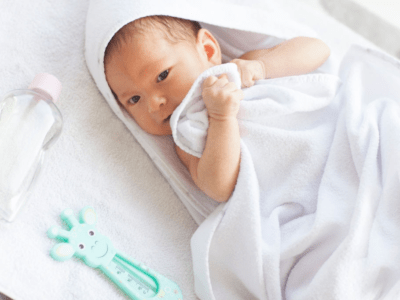

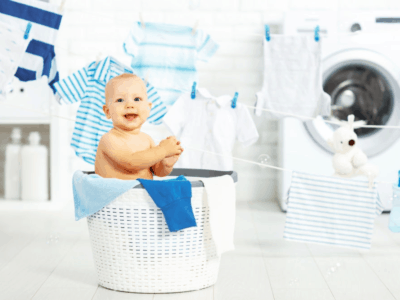

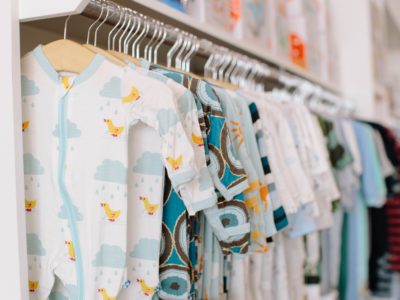

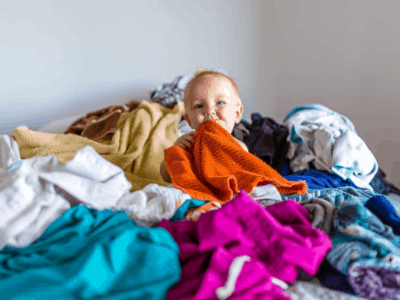
 Baby’s First Bedroom
Baby’s First Bedroom  How to Organize Baby Clothes
How to Organize Baby Clothes  How to Get Baby Poop Out of Clothes
How to Get Baby Poop Out of Clothes  3 Tips to Take Care of Working Mom Duties & Have Time For Yourself
3 Tips to Take Care of Working Mom Duties & Have Time For Yourself  How to Get Baby Oil Out of Clothes
How to Get Baby Oil Out of Clothes 